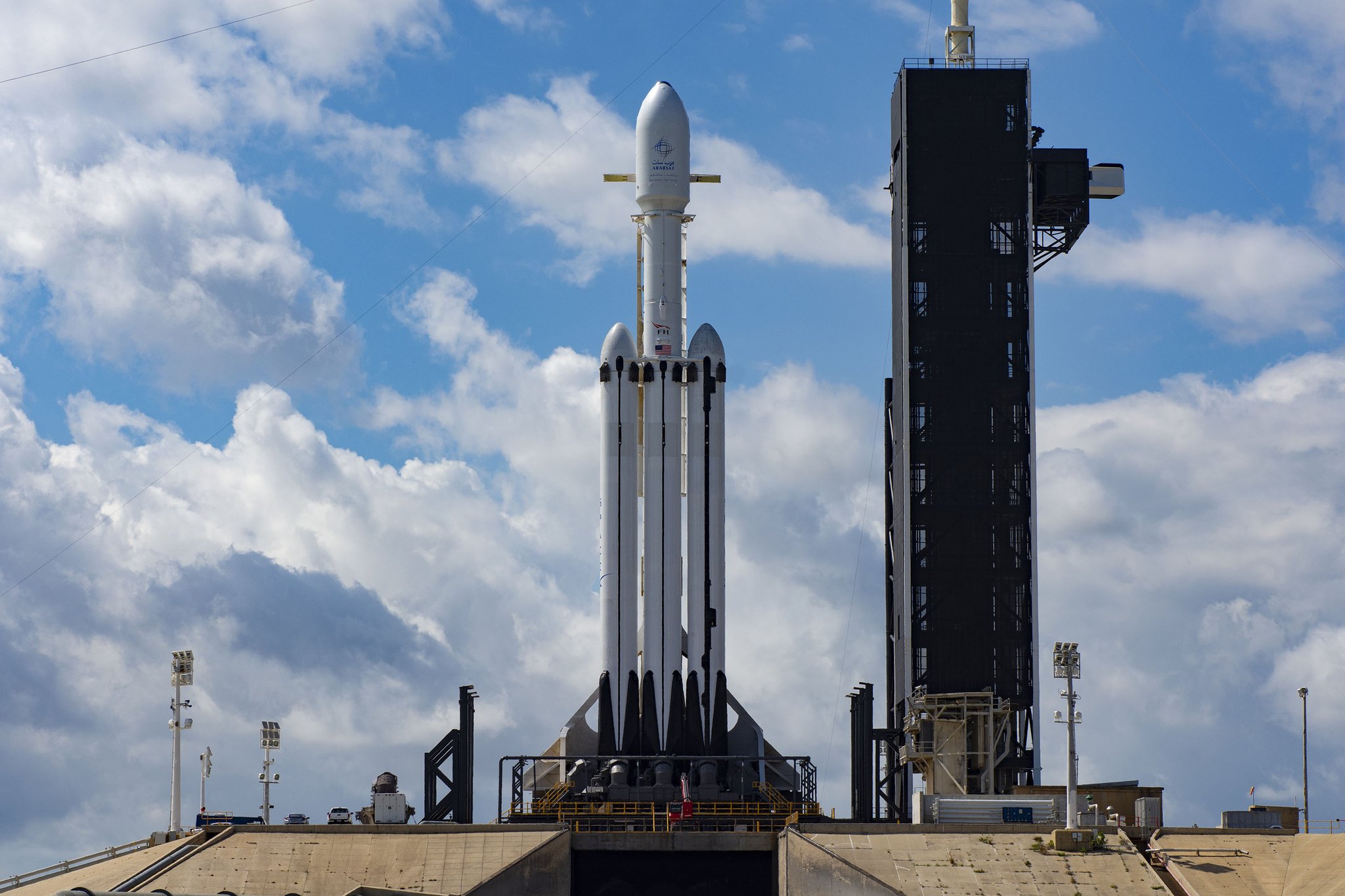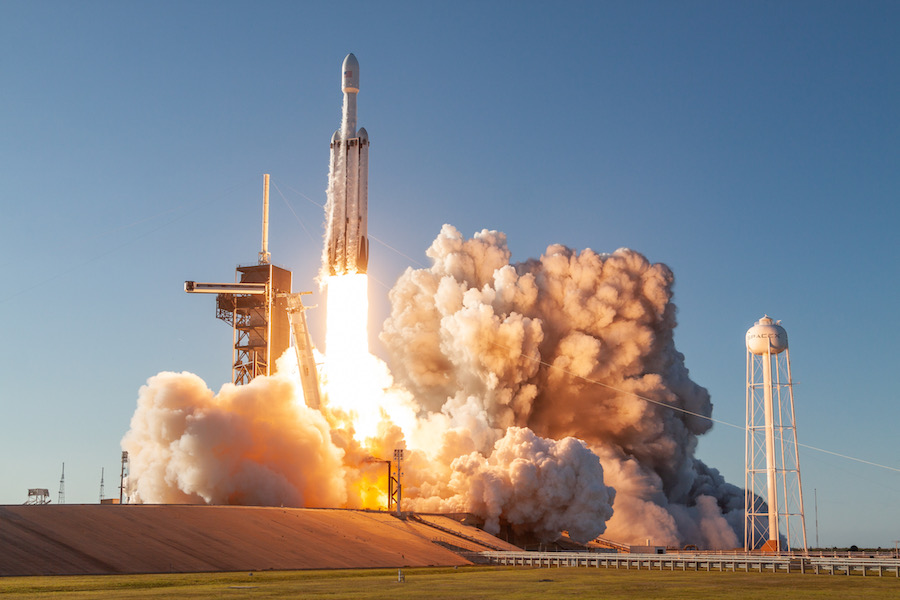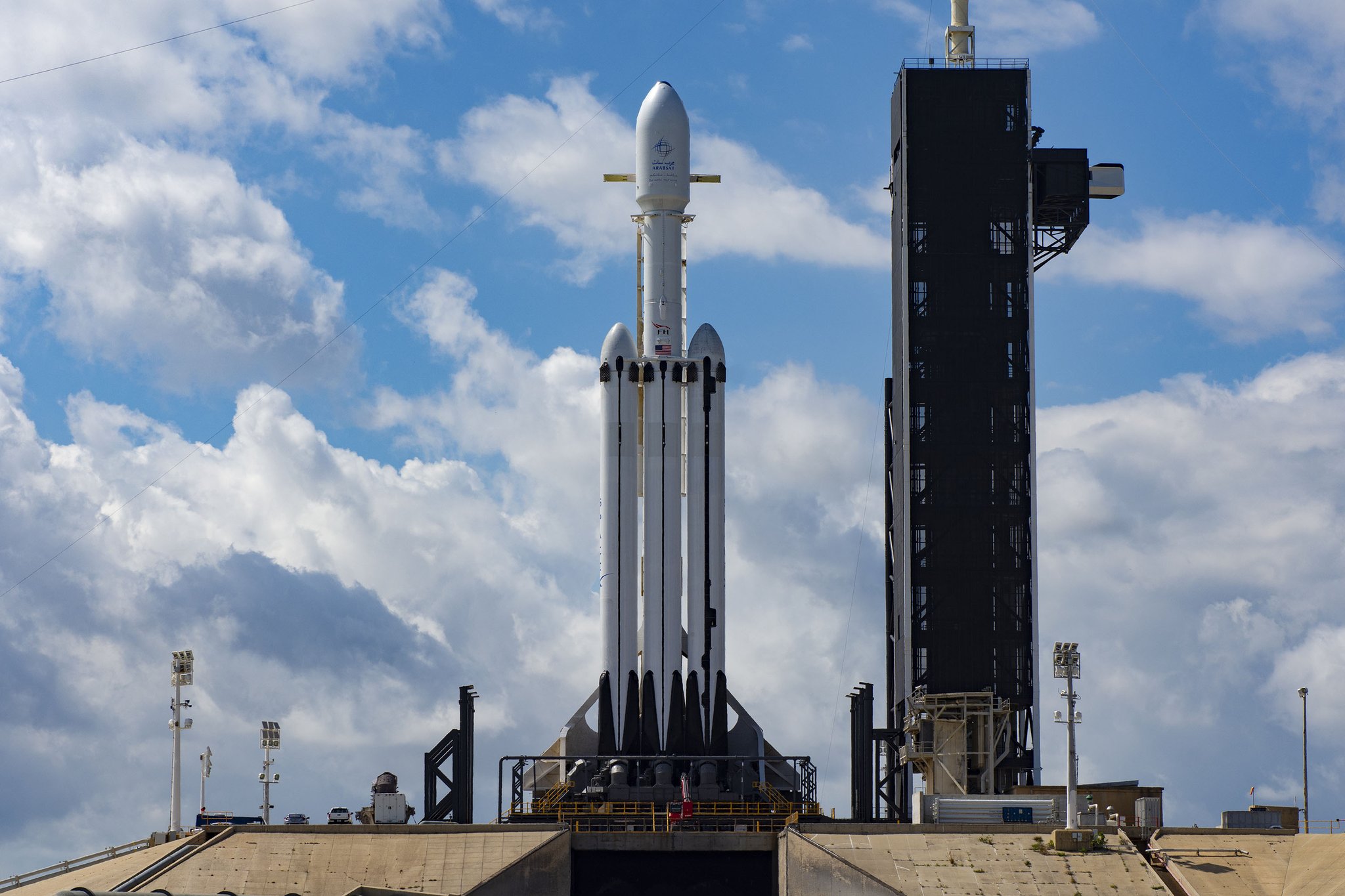
A Closer Look At SpaceX’s Falcon Heavy Launch Vehicle
After multiple years without a Falcon Heavy launch, this is set to change not long from now. Scheduled only months away during the summer, the Falcon Heavy is planned to launch once again apart of USSF-44. Not only this, but even more missions with the heavy-lift launch vehicle are scheduled not long after as well. The Falcon Heavy is a very special launch vehicle for many different reasons.
Whether you are looking at its power, partial reusability, or its general architecture and design, you are bound to find something unique. These reasons among others make the Falcon Heavy stand out from practically all other rockets within the industry. Not to mention the manufacturing process and how SpaceX created one of the most powerful launch vehicles in the world.
Despite the rocket’s innovative capabilities, it has not been launched in multiple years. There are multiple reasons for this including the success of the Falcon 9, launch demand, and more. Either way, now in 2022, the Falcon Heavy looks to have a busy future ahead of it. Here I will go more in-depth into the launch vehicle’s power, design, boosters, and what makes it such a special launch vehicle.
Falcon Heavy Features

Falcon Heavy is the most powerful launch vehicle in operation with more than 5.1 million pounds of thrust at liftoff. Falcon Heavy builds on the proven, highly reliable design of Falcon 9. Falcon Heavy’s first-stage comprises three Falcon 9 first stages with enhancements provided to strengthen the cores. Furthermore, Falcon Heavy utilizes the same second stage and same payload fairing as flown on Falcon 9, fully benefitting from the flight heritage provided by Falcon 9 flights. This commonality has also minimized infrastructure unique to the vehicle. SpaceX first launched the Falcon Heavy vehicle in February of 2018. The purpose of the Falcon Heavy is to provide a unique and affordable heavy-lift launch service to the market within the space industry. Not only this but it is also intended to be reliable. A study by The Aerospace Corporation found that 91% of known launch vehicle failures in the previous two decades can be attributed to three causes: engine, avionics, and stage separation failures. With this in mind, SpaceX incorporated key engine, avionics, and staging reliability features for high reliability at the architectural level of Falcon launch vehicles.
Starting with the Merlin engines, which feature the highest thrust-weight ratio of any boost engine ever made. The liquid-propelled Merlin powers the Falcon propulsion system. The engine features a reliable turbopump design with a single shaft for the liquid oxygen pump, the fuel pump, and the turbine. The engine uses a gas generator cycle instead of the more complex staged combustion cycle. The regeneratively cooled nozzle and thrust chamber use a milled copper alloy liner that provides large heat flux margins. A pintle injector provides inherent combustion stability. Altogether there are 27 Merlin engines powering the first stage with 9 on each booster. In addition, in the process of working towards reliability, engine failure modes are minimized by eliminating separate subsystems where appropriate. For example, the first-stage thrust vector control system pulls from the high-pressure rocket-grade kerosene system, rather than using a separate hydraulic fluid and pressurization system. Using fuel as the hydraulic fluid eliminates potential failures associated with a separate hydraulic system and with the depletion of hydraulic fluid. Lastly, by employing multiple first-stage engines, SpaceX offers the world’s first evolved expendable launch vehicle class system with engine-out capability through much of first-stage flight. System-level vehicle management software controls the shutdown of engines in response to off-nominal engine indications; this has been demonstrated in flight, with 100% primary mission success. Although the likelihood of catastrophic engine failure is low, and failing engines are designed to be shut down prior to a catastrophic failure, each engine is housed within its own metal bay to isolate it from neighboring engines.
Looking at the structure and architecture of the launch vehicle, the Falcon Heavy side-boosters restraint, release, and separation systems use pneumatic devices that provide low-shock release and positive force separation over a comparatively long stroke. The pneumatic system allows for acceptance and functional testing of the actual flight hardware, which is not possible with a traditional explosives-based separation system. SpaceX highlights that it was not as easy as just strapping two Falcon 9 boosters to the side of a full Falcon 9. The company provides a figure that highlights the nomenclature for the center core and side boosters. Structurally, the plus y-axis and minus y-axis boosters are identical. The center core consists of thicker tank walls and carries the booster separation system. The z axis points to zenith when the vehicle is horizontal.
This also is the case for the separation of the two side boosters during a launch. Specifically, for Falcon Heavy, the fundamental purpose of the side cores is to apply axial force to the center core during ascent and increase the impulse delivered to the second stage before stage separation. The timing of the shutdown for the Falcon Heavy side cores can be tailored for each mission to ensure that the proper impulse is delivered. Each side core is structurally connected to the center core at forward and aft locations. Two pneumatic pusher separation mechanisms connect the forward ends of each side core to the center core, fastening the top of the LOX tank in the center core to the side cores. They maintain the connection during ascent and then actively jettison the side cores following side core shutdown. Two identical pusher separation mechanisms connect the aft ends of each side core to the center core and are used to laterally force the base of the side cores from the center core following the side core shut down.
Not only this but Falcon avionics feature a flight-proven, three-string, fault-tolerant architecture that has been designed to human-rating requirements. Avionics include flight computers, Global Positioning System receivers, inertial measurement units, SpaceX-designed and manufactured controllers for vehicle control, a network backbone, S-band transmitters, and a C-band transponder for range safety tracking. The S-band transmitters are used to transmit telemetry and video to the ground, from both the first and second stages, even after stage separation. In addition, Falcon Heavy is equipped with an autonomous flight termination system (AFTS) to limit the potential damage caused by a launch vehicle malfunction. The system terminates the flight of the vehicle automatically if mission rules are violated. The use of an AFTS requires fewer range assets to support launch operations, resulting in fewer range constraints and increased launch opportunities. All of these different features work to increase the success and reliability of the Falcon Heavy.
Launch History

As mentioned prior, the Falcon Heavy has had a very interesting launch history. The first launch was on February 6th, in 2018. This mission was a test and saw the heavy-lift launch vehicle send a Tesla Roadster into space. It was considered a massive success with the only failure being the loss of the third booster that was intended to land on a drone ship. Just over a year later in April of 2019, the Falcon Heavy had one of its first official missions. In this case, the payload was a heavy communications satellite purchased by Arabsat. Similar to the last launch everything went according to plan with the exception of the third booster which managed to land on the drone ship but fall over not long after. Finally, just a few months later the Falcon Heavy was launched one more time. The mission supported the U.S. Air Force National Security Space Launch (formerly EELV) certification process for the Falcon Heavy. The original contract price was $165 million, which was later reduced, in big part due to the military’s agreement to fly the mission with reused side boosters. Following the common theme of past launches, the two-side booster landed safely while the core booster failed to land on the drone ship. Now in April of 2022, we are only a few months away from marking over 3 years since the last Falcon Heavy launch. This can bring up the question of why so few launches.
There are a variety of reasons why but one of the most impactful has to do with the success of the Falcon 9. While in development, SpaceX was not quite sure how powerful the rocket would turn out and its capabilities once finished. In reality, the Falcon 9 turned out to be a lot better than expected which had an effect on the Falcon Heavy. Specifically, due to improvements to the performance of Falcon 9, some of the heavier satellites flown to GTO, such as Intelsat 35e and Inmarsat-5 F4, ended up being launched on a Falcon 9.
Conclusion
While it has been a long time since we have seen the Falcon Heavy launch, this is set to change only months from now. Here we are expected to see quite a busy launch schedule for the heavy-lift rocket start to develop very soon. We will have to wait and see how it progresses and the impact it has on the space industry.
